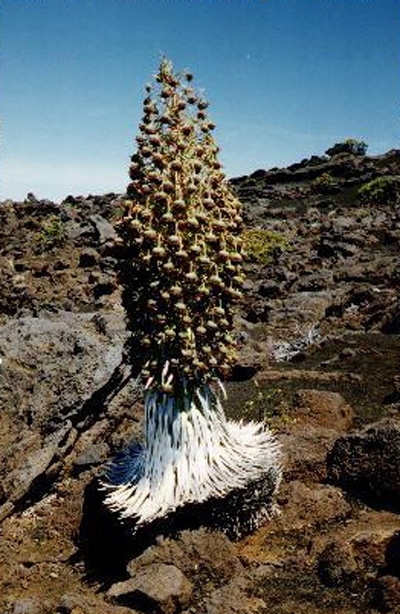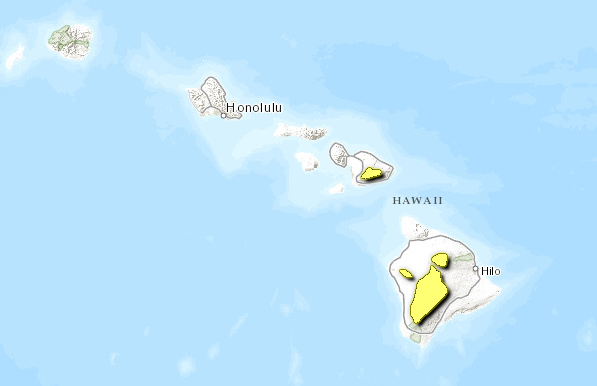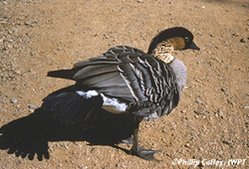Hawaii tropical high shrublands
Biodiversity Features
Hawaiian high shrublands range from open shrublands to alpine grasslands and deserts. The upper slopes of the high volcanoes, Mauna kea, Mauna loa, Hualalai, and Haleakala, support shrubland habitats with species such as Chenopodium oahuense, Vaccinium reticulatum, Dubautia menziesii, and Santalum haleakalae. Subalpine grasslands, patchily distributed within and adjacent to the shrub zone, are dominated by tussock-forming species such as Deschampsia nubigena, Eragrostis atropioides, Panicum tenuifolium, and Trisetum glomeratum. On the highest peaks, cold and dry conditions create alpine deserts inhabited by silversword (Agryroxiphium sandwicense), Dubautia spp., and other alpine-adapted plants, as well as alpine-adapted invertebrate species. The Hawaiian nene goose (Branta sandvicensis) lives in high shrubland areas, and endangered Hawaiian dark-rumped petrels nest in burrows in subalpine and alpine cinderlands.
Current Status
Several important areas for conserving high shrublands that have no or incomplete protection have been identified by Sohmer and Gon: Leeward East Maui, Haleakala Summit of Maui (protected), Alpine summits (Hawaii), and the Pohakuloa-Saddle area of Hawaii.
Types and Severity of Threats
Although some large blocks of relatively intact high shrublands and alpine deserts still exist, overgrazing by domestic and feral livestock, wildfires, trampling from recreational activities, competition from introduced plants, removal of plants such as silverswords, and introduced ants that kill native invertebrate pollinators all pose significant threats to native species and communities. Alpine grasslands have been reduced in range, but still occupy more than 50 percent of their presumed original range.
Conservation Partners
- Hawaii Natural Heritage Program
- The Nature Conservancy
- The Nature Conservancy of Hawaii
Justification of Ecoregion Delineation
The Hawaiian tropical high shrublands corresponds to Küchler’s unit 7 (Grassland, microphyllus shrubland, and barren). Omernik did not classify Hawaii, and Bailey clumped all of Hawaii into one unit.
Additional Information on this Ecoregion
- For a shorter summary of this entry, see the WWF WildWorld profile of this ecoregion.
- To see the species that live in this ecoregion, including images and threat levels, see the WWF Wildfinder description of this ecoregion.
- World Wildlife Fund Homepage
| Disclaimer: This article is taken wholly from, or contains information that was originally published by, the World Wildlife Fund. Topic editors and authors for the Encyclopedia of Earth may have edited its content or added new information. The use of information from the World Wildlife Fund should not be construed as support for or endorsement by that organization for any new information added by EoE personnel, or for any editing of the original content. |


